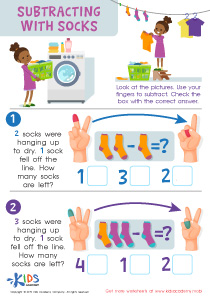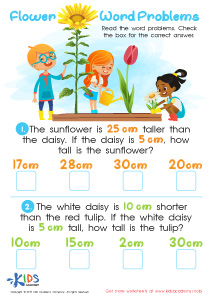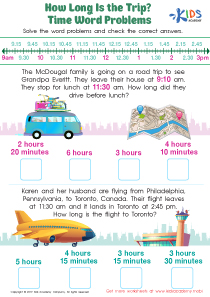Area and Perimeter Word Problems Worksheets for Ages 4-9
3 filtered results
-
From - To
Our Area and Perimeter Word Problems Worksheets for ages 4-9 provide an engaging and educational way to introduce young learners to essential math concepts. These worksheets are designed to bridge the gap between foundational math skills and real-world applications through fun and interactive word problems. Children will learn how to calculate the area and perimeter of various shapes while enhancing their problem-solving abilities. Perfect for parents, teachers, and caregivers, these worksheets foster critical thinking and mathematical reasoning in a format that is accessible and enjoyable for young learners. Empower your child's math journey today with our comprehensive worksheets.
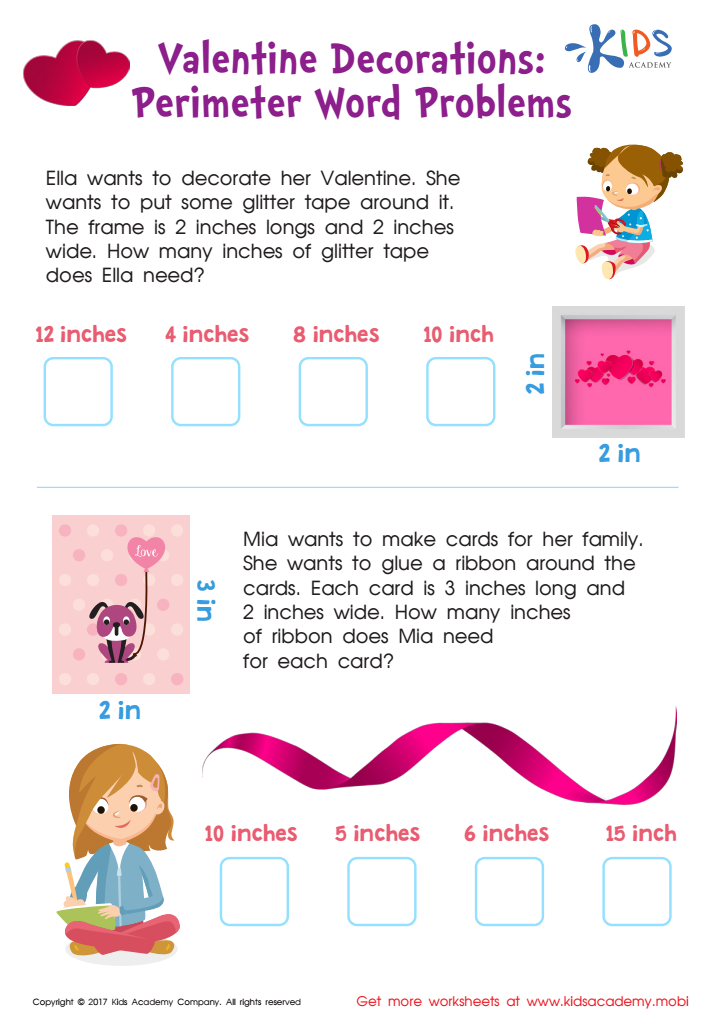

Perimeter Word Problems Worksheet
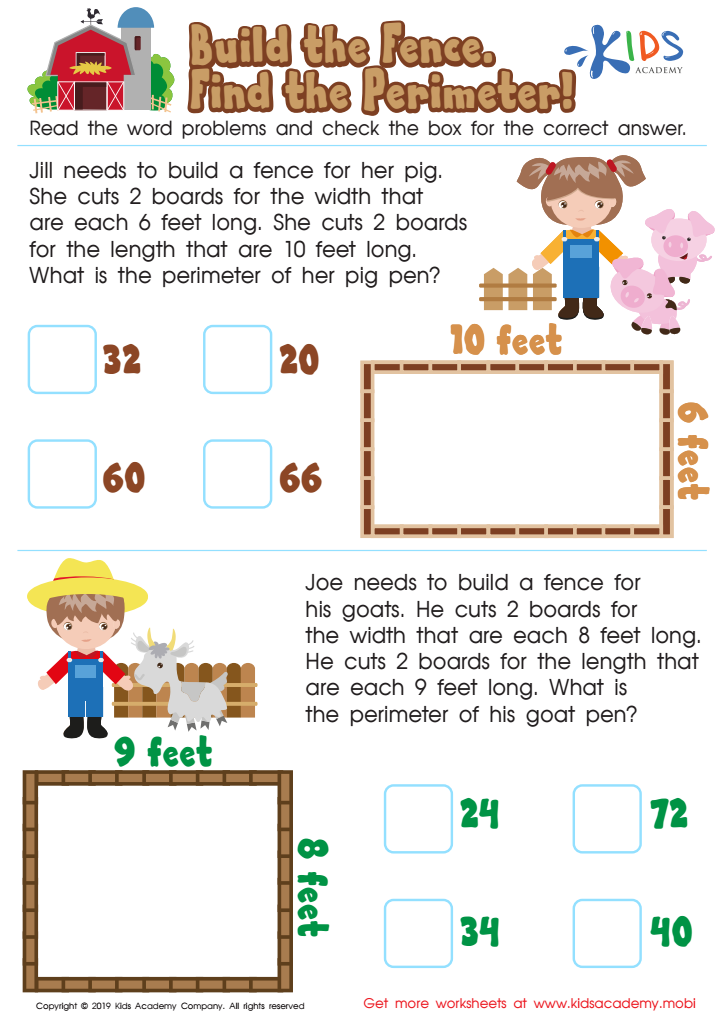

Build the Fence, Find the Perimeter Worksheet
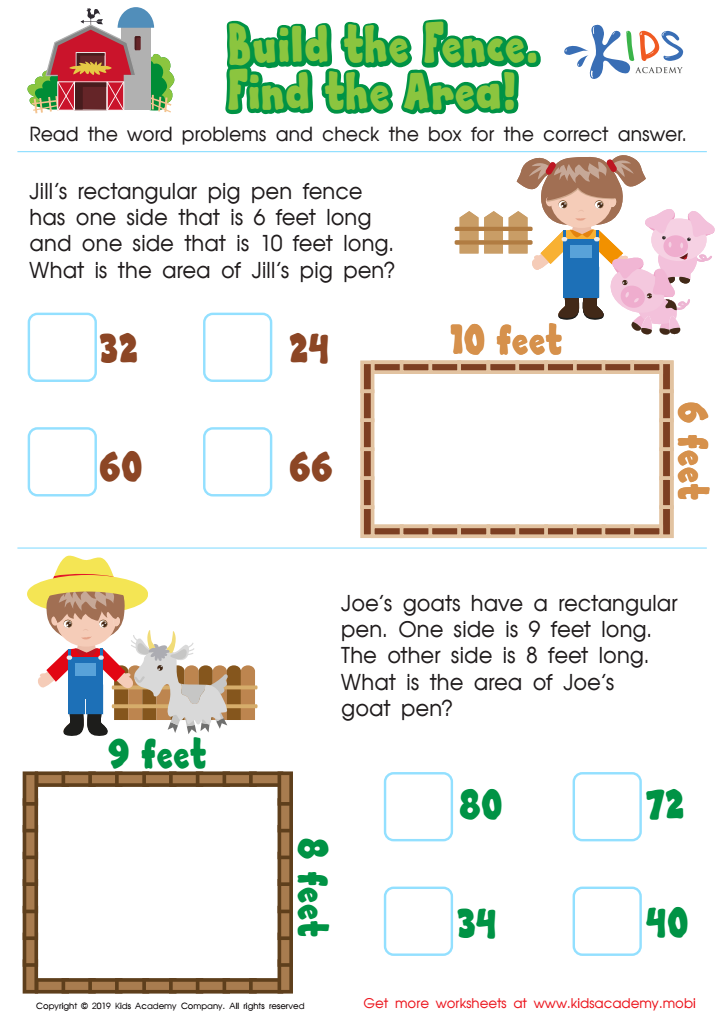

Build the Fence, Find the Area Worksheet
Area and perimeter word problems are essential components of early childhood education, especially for children aged 4-9. Understanding these concepts goes beyond just memorizing formulas; it lays the groundwork for critical thinking, problem-solving, and practical life skills.
First, solving area and perimeter problems helps young children develop spatial awareness and geometry skills. By manipulating shapes and figures, students start understanding how different dimensions relate to each other, fostering a deeper comprehension of their physical environment.
Secondly, area and perimeter problems enhance computational skills. Early learners practice basic arithmetic—addition, subtraction, multiplication, and division—while solving these problems, reinforcing their numerical fluency.
Moreover, these problems introduce students to logic and reasoning. They learn to identify key pieces of information and determine the steps required to find the solution. This logical sequencing nurtures mental discipline and helps in the formation of structured thought processes.
From a practical perspective, understanding area and perimeter is fundamental in real-life activities. Whether it’s planning the layout of a room, wrapping a present, or estimating the quantity of materials needed for a project, these concepts are universally applicable.
For parents and teachers, emphasizing area and perimeter word problems aids in developing a child’s ability not only to solve mathematical equations but also to apply these solutions contextually, benefiting their academic journey and everyday life.

 Assign to the classroom
Assign to the classroom


